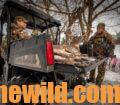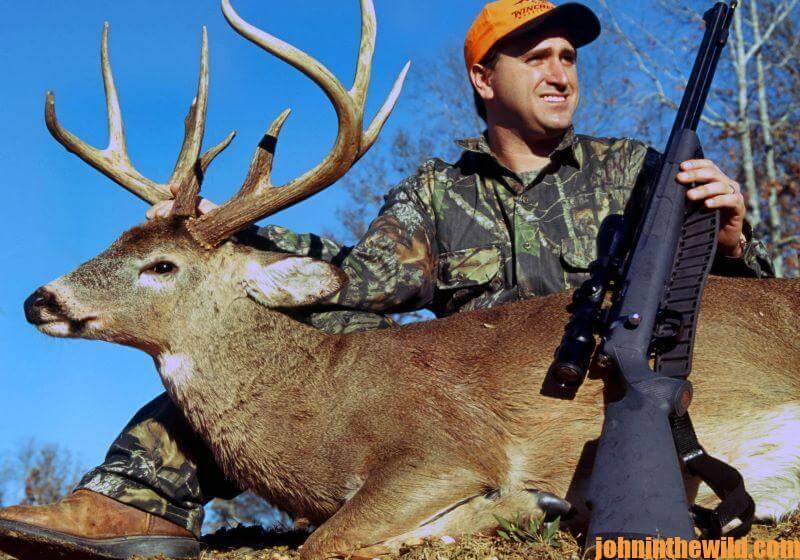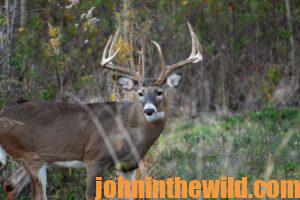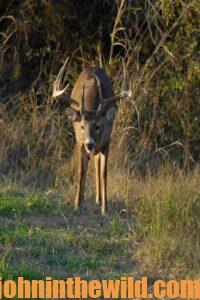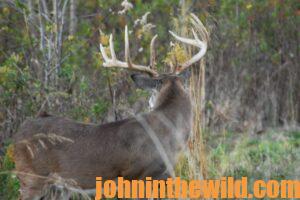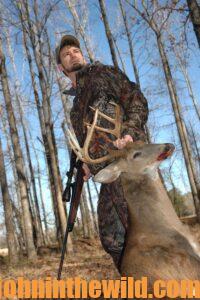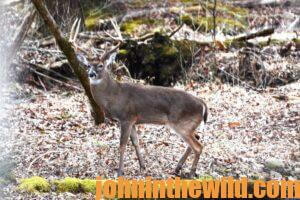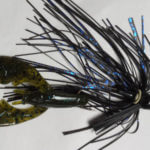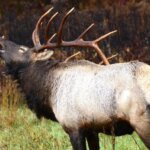Editor’s Note: Dr. Grant Woods of Reeds Spring, Missouri, one of the nation’s leading white-tailed deer researchers, not only has studied whitetails for many years but also uses the latest scientific technology to track deer movement and learn why deer do what they do. I’ve asked Woods to tell our readers how to find the bucks of their dreams this year.
Our company has some land in Georgia that we manage where we’ve kept very-thorough data there for seven years to try to learn where the big bucks live on that land. We’ve hunted this property intensively and spread our hunting out over the entire area. So, we felt like we knew where the deer were, and what they were doing. We took a map of our hunting property and divided the land up into 1/8-mile sections (220 yards). We made a grid on the map and gave each of those sections a number and a letter. Then everyone who hunted that property recorded exactly where they hunted on that land and the number of hours they’d spent hunting in those 1/8-mile blocks. Each 1/8-mile block that had been hunted for at least 10 hours was then highlighted on the aerial map.
The more the area was hunted, the darker the highlighter we used. For instance, the 1/8-mile squares that were hunted the most were colored black. The 1/8-mile blocks of land not hunted at all would be clear. At the end of seven years, by keeping these records, I was amazed at the numbers of areas we’d never even hunted. We learned that we’d directed those deer on that land to use the travel corridors that we never hunted. In other words, the majority of the deer on the property were consistently moving through the travel corridors that no one ever hunted.
From this information, we’ve learned that if you hunt the places no one else hunts, even on lands that have a lot of hunting pressure, you still can see and take the trophy bucks that no one else on the property sees. If you have a lease and all the hunters on that lease want to take more big bucks, then I suggest that you get a map of the land you hunt, set up a 1/8-mile grid on that map, and get everyone to mark where they hunt, and how much time they spend hunting there. Each season every member of the club will learn more about where everyone hunts, and more importantly, they easily can see where they’re not hunting. Those blocks not being hunted probably contain the bigger and better bucks.
My company has used this system on several properties we manage. The hunters and the landowners who hunt those properties have been totally amazed to learn the amount of land they’re not hunting each year. If the hunters on your lease or in your club don’t want everyone to know where they’re hunting, I suggest that each hunter keep a log each season of which blocks he’s hunted and the number of hours he’s hunted in each. Then at the end of the season, all the hunters can turn in their logs, and someone in the club who volunteers can map and chart all the hunting locations. Then the members can see where the hunting pressure is and still don’t have to know where each is hunting specifically.
On another piece of property where my crew is paid to harvest deer, we’ve kept very-extensive, precise records, noting exactly where we’ve hunted, how long we’ve hunted each place, and what number of deer have been taken there for the past six years. We’ve been far more scientific about how we’ve hunted than any hunting club ever will be. Even after hunting there for six years and thinking we’d gone into every nook and cranny, there’s as many squares on that property that haven’t been hunted as there are 1/8-mile squares that have been hunted. We average over 1,000 hours of tree stand time a season on that land. Since our scientists are very disciplined and try to scout hard and hunt deep woods where no one else hunts, we’ve learned that most of the white squares (the less-hunted places) on this property are along road edges and access areas that we use to get deeper into the property.
I’m totally convinced that the more daytime hunting pressure a property receives, the less daytime activity in which the deer will participate. That’s the reason I say that if you want to take a trophy early-season buck this season, then you need to hunt the places with fewer deer and hunters, instead of the regions with more deer and more hunters. The places with fewer hunters will home bucks that move more in daylight hours.
To learn more about Dr. Grant Woods’ work and download free video and learn the latest research about deer, visit https://www.growingdeer.tv and https://www.facebook.com/GrowingDeer/.
John E. Phillips’ latest deer book “How to Hunt Deer Like a Pro: Volume II,” just was published this week on Amazon in print at https://www.amazon.com/gp/product/B0BGSP3QPB/ref=dbs_a_def_rwt_hsch_vapi_tpbk_p4_i4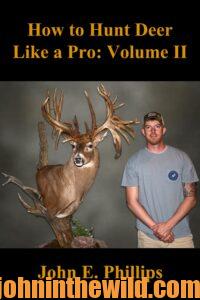
The Audible version should be available by mid-November. Since deer hunting and deer hunters are drastically changing each year, John interviewed some top deer hunters like Mark Drury, Dr. Larry Marchinton, Dr. Bob Sheppard, Pat Reeve, Gene Wensel, Cody Robbins, Ernie Calandrelli, Brian Murphy and Luke Brewster, who took the world’s largest whitetail, to learn their up-to-date techniques for successfully hunting deer and having more places to hunt. 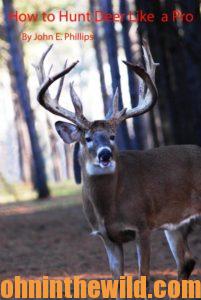 Also, John’s first book in that series “How to Hunt Deer Like a Pro” at http://amzn.to/YpoQHA for Kindle, print and Audible, includes other outstanding deer hunters. To see all of John E. Phillips’ books on hunting and fishing, visit www.amazon.com/author/johnephillips.
Also, John’s first book in that series “How to Hunt Deer Like a Pro” at http://amzn.to/YpoQHA for Kindle, print and Audible, includes other outstanding deer hunters. To see all of John E. Phillips’ books on hunting and fishing, visit www.amazon.com/author/johnephillips.
Tomorrow: Realize You Can’t See Deer


